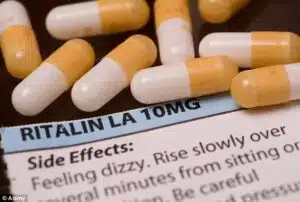Diagnostic process for ADHD in children 
There is no singular test to diagnose ADHD; rather, an ADHD diagnosis is made after a series of subjective evaluations by a primary care physician or clinician.
The process includes:
1. Medical exam (physical health history)
2. Interviews/ questionnaires with teachers and parents
3. DSM criteria of ADHD
4. ADHD rating scales
ADHD symptoms have to be present in all settings (home and school). Also, ADHD has to cause severe impairment. ADHD is chronic and for most children, it continues into adulthood. Since the diagnosis of ADHD is subjective, it also depends on the culture and environment a child is growing up in. For example, certain teachers or parents may not know to look out for certain behaviors or may see certain behaviors as “normal”.
Symptoms of ADHD in Children
The main symptoms of ADHD include: inattention, impulsivity and hyperactivity. Some children with ADHD are hyperactive and impulsive and are more likely to get noticed by their teachers. On the other hand, children who suffer from inattention, are less likely to be on their teachers’ radar because they are less disruptive.
Examples of ADHD behaviors in children:
1. Inattention: trouble paying attention in boring tasks, appear to be not listening, lose things
2. Hyperactivity: fidgeting, squirming, overly talkative
3. Impulsivity: no self control, intrusive, interrupts others
While ADHD has its challenges, there are also positive qualities associated with children who have ADHD such as: creativity, flexibility and great enthusiasm and energy. When treated with the right therapy and/or medication, children with ADHD can greatly improve their ability to achieve in school.
Can you diagnose a preschool child with ADHD?
The difficulty when diagnosing younger children with ADHD is due to the fact that it is hard to differentiate between age appropriate behavior and ADHD symptoms. When diagnosing a child in preschool or younger, there must be extra evaluations put in place before a clinician can confirm it’s ADHD.
Sometimes younger children can be experiencing language or developmental delays which can falsely be attributed to ADHD. By age four or five, ADHD becomes easier to diagnose because at this point, the children with ADHD are more impulsive and disruptive than their classmates. At the younger ages, more of the children are engaging in impulsive actions and can have trouble listening to directions.
Is ADHD being over diagnosed?
About 1 in 5 high school boys in the US are diagnosed with ADHD and around 6.3 million children ( ages 4 to 17) have had an ADHD diagnosis at one point in their lives. In recent years, there has been a sharp increase in the amount of ADHD diagnoses being made. Majority of those diagnosed then receive stimulants like Ritalin or adderall to control their symptoms.
The problem with an ADHD diagnosis is that there are no objective tests and many people worry that it is being over diagnosed. For example, some clinicians think too many children are being put on medication or that medication is being used to curb mild symptoms. Some parents may be giving their children pills, which improve their focus and allow them to do better in school, but this may not be necessary.
Treatment Plans
Treatment plans should be implemented by both parents and teachers to manage ADHD both at home and at school. Parents should implement structure in their child’s lives, give clear expectations, teach social skills and create a proper sleeping and eating schedule. At school, teachers can seat children with ADHD away from doors and windows, have written behavior plans, allow for movement breaks and teach the lessons in a dynamic way.
Treatment for the different age groups:
1. Preschoolers: Parent and teacher administered behavior therapy ! This should be the first line of treatment and then medication can be applied if there is no improvement (especially in such a young age group)
2. Elementary school (ages 6 to 11): FDA approved medication (stimulant) and/or behavioral therapy
3. Adolescents (ages 12 to 18): Medication and behavioral therapy (preferably both).
Adolescents with ADHD are more likely to be in car crashes, engage in substance abuse and drop out of school so early intervention and treatment is extremely beneficial. With medication and therapy, children who have ADHD can succeed in school and secure a higher quality of life.
Work Cited
https://www.helpguide.org/articles/add-adhd/attention-deficit-disorder-adhd-in-children.htm
https://www.mayoclinic.org/diseases-conditions/adhd/diagnosis-treatment/diagnosis/dxc-20196188
https://www.chadd.org/understanding-adhd/for-parents-caregivers/preschoolers-and-adhd.aspx
Schwarz, A., & Cohen, S. (2013). ADHD seen in 11% of US children as diagnoses rise. New York Times, 331.
https://www.aafp.org/afp/2014/1001/p456.html

